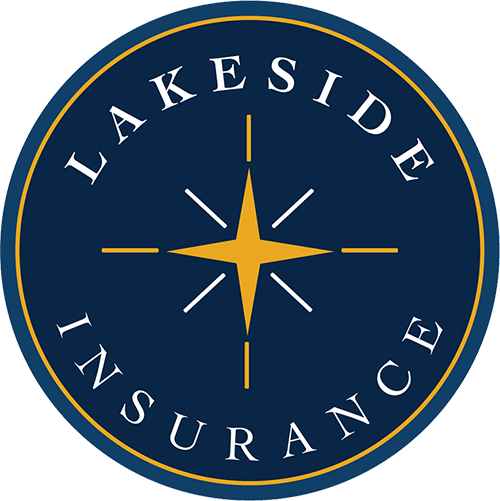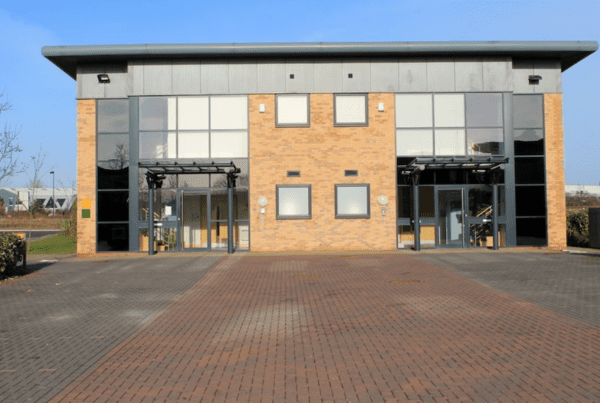
As a business owner, you have a responsibility to your employees and your stakeholders. Insurance coverage is a critical component of your requirement to deliver stability to your team. From employee benefits options to protection against business liabilities, the insurance you pick impacts your business’s bottom line.
Because insurance is a constantly changing field, you need a cohesive strategy to manage your risks. The global environment and climate change also impact your immediate protection options and long-term strategy.
Read on to learn what climate change means for your business, and how to adapt your insurance approach to protect your most valuable assets.
What is commercial insurance?
Commercial insurance and business insurance are the same thing. Commercial insurance is a combination of different insurance policies that cover you for losses.
Some commercial insurance is grouped into packages to target specific industry risks. For example, you might have a packaged insurance policy called a business owners policy (BOP). A BOP covers general risk exposures like general liability, property damage and business income replacement. It’s typically sufficient coverage for small to midsize businesses in lower-risk industries.
There are different types of commercial insurance to protect your company from losses due to risks like:
- Property damage
- Theft
- Professional errors and omissions
- Lawsuits
- Employee dishonesty and theft
- Employee injuries
- Loss of business income
- Auto accidents and liabilities
- Customer injuries
- Data breaches and cyber liabilities
You can add policies to a BOP to boost the base policies and provide more coverage for other liabilities.
A BOP might not be for you if your business is in a high-risk industry. Some industries, like construction, offer insurance packages tailored to the risk liabilities often encountered in that industry. Your agent can help you decide whether a package or a combination of separate standalone policies works best for you.
The importance of a business insurance strategy
A business insurance strategy involves identifying, evaluating and addressing your risks, then transferring those risks to an insurance company. Having a strategy is vital for financial protection and can save you from significant losses or bankruptcy.
Risks like catastrophic damage to property after a tornado or a product liability lawsuit can cause your company to go bankrupt. Insurance helps offset the losses. But you need a strategy to manage your risks, which requires knowing your risk exposures.
For example, a technology company will have different exposures than a construction company. Both will need basic coverage for things like general liability and property damage. But a tech insurance package might include options for first- and third-party cyber liability, professional liability, and directors and officers coverage. A construction insurance package might include options for inland marine coverage for heavy machinery, professional liability, auto coverage and surety bonds.
Not all businesses need coverage for every possible risk. For example, you won’t need commercial auto insurance if you don’t have business vehicles.
An all-inclusive business insurance strategy includes various types of insurance. It takes a general approach, which can be effective if your risks are minimal. Small and midsized businesses typically face threats such as:
- Property damage, including physical damage due to fires, theft or natural disasters
- General liability arising from product defects, client injuries or breaches of contract
- Employee-related risks like staff injuries, employee dishonesty, or issues related to employee benefits or retirement plans
- Financial risks, like debtors who default on payments, interest rate hikes or cost increases
- Strategic risks, including market trend changes, supply chain mishaps or shifts in consumer demands
Identifying risks specific to your operations and deciding whether to insure against them is critical to an effective insurance strategy. It helps to understand your worst-case scenario: What are your immediate business liability exposures? What are the outlying risks your business might incur? How much short- and long-term financial damage you could suffer?
Some worst-case scenarios include events caused by climate change.
Climate change causes extreme weather and other challenges
Climate change describes significant changes in temperature and weather patterns over time. While these changes can occur organically from natural disasters like volcanic eruptions or solar activity, human action is the main cause of climate change in today’s world.
Human-induced climate change is primarily caused by burning fossil fuels like gas, coal and oil. Using these types of resources can cause gas emissions, called greenhouse gasses, to gather in the Earth’s atmosphere. These greenhouse gasses trap heat from the sun around the planet, raising the global temperature and leading to severe negative consequences for the entire globe.
Climate change does more than just raise the temperature. Climate change leads to other challenges, such as:
- Severe storms and weather patterns
- Droughts
- Rising sea levels
- Melting ice caps and glaciers
- Animal extinctions and endangerment
- Reduced food production and availability
All of this affects how businesses operate. For example, extreme weather can disrupt global supply chains and reduced resources can lead to increased competition and price gouging.
Climate change also impacts business insurance strategies.
How climate change affects businesses and insurance
While climate change may not directly impact every business risk, it drastically impacts some. Here are a few ways climate change affects business operations and insurance options.
Payouts are taking longer to complete
In areas prone to natural disasters like wildfires or severe storms, it can take much longer to get a claim processed than in previous decades. Particularly when there’s an influx of claims due to a weather event, insurance companies can struggle to process claims and deliver settlements and payouts to their insureds. This leaves businesses vulnerable.
Certain coverage options are no longer available
Another way climate change impacts insurance is in the coverage options available in certain areas. For example, in places like Florida that are at risk of flooding or wind damage from hurricanes, it can be challenging to get an insurance policy to cover property damage. Some insurance companies no longer offer insurance policies in high-risk areas since there is a high chance of a significant portion of the population filing a claim or requesting a settlement.
Premiums in high-risk areas are increasing
While losing all options for insurance coverage is on the extreme end of things, there is no doubt that insurance premiums are increasing in areas at high risk of natural disasters. Higher premiums help offset potential losses for insurance companies. But if the policies available are no longer affordable, it can force individuals and businesses to leave gaps in their insurance coverage.
Business resources are allocated to other areas
Protecting your internal business resources is an important part of general business management. But businesses are increasingly setting aside resources in case a natural disaster or weather emergency causes property damage.
Self-insuring can mean less money to invest in insurance. It can also reduce business growth opportunities. Business owners need to consider what makes more sense: setting aside internal resources to pay for an extreme weather event or using a portion of their revenue on an insurance policy.
Long-term property values are in question
Property is a substantial investment that can build equity for a business. However, climate change is calling long-term property values into question. With the rise in severe weather events, property values in high-risk areas may not provide the same financial security level as in the past.
Supply chains are less stable
Climate change affects the global supply chain. When a weather event or climate disaster occurs on one side of the globe, the entire planet can feel the impact. If you supply or source any materials from regions at high risk of a climate event, you could lose income or incur liability. For example, your clients might sue you for a breach of contract if you depend on one supplier for all your needs.
Practical tips for adjusting your insurance strategy
Your insurance strategy should reflect your organization’s needs. Basic coverage isn’t enough to protect you from the risks and liabilities associated with climate change. Thankfully, there are steps you can take to adjust your insurance strategy.
1. Carefully review your insurance coverage options
The first step is to look at what coverages you currently have. You may have just a basic policy, like a BOP, or you may already have a robust collection of policies for various risks.
Examining your policies through the lens of climate change can help you find gaps in your coverage you hadn’t thought of before. It can also help you learn where your policies are lacking in areas unassociated with climate change.
You may want to explore alternative insurance like parametric insurance. Parametric policies pay claims based on a triggering event without the need to evaluate the damage or loss. The triggering event is usually a natural disaster like an earthquake or a flood. If certain parameters are met, the insurance policy pays out.
For example, in an earthquake parametric policy, the triggering event might be an earthquake with a magnitude of 6 or higher on the Richter scale within a specific geographic area during the policy period.
The advantage of parametric insurance is that payments can be made quickly after the triggering event, providing policyholders with immediate funds. However, there’s also a risk that the cost of damage will surpass the payout. That’s because the amount is predefined and doesn’t consider the actual damage.
2. Invest in property claims software
Property claims software can help you track climate change and natural disaster information. You can use this information to adjust your coverage and get an idea of what property values will look like in different locations before and after severe weather events.
Your business property investments are some of your most important assets. Thinking about what the future looks like for your business properties and how you can best protect them from natural disasters is crucial for long-term security.
Even if you decide not to invest in property claims software, it helps to know that your insurance carrier has tools to accurately calculate your property values.
3. Strengthen your property’s infrastructure
Having insurance for your properties can help protect your business from future loss. You can make a claim if your property is damaged from a natural disaster brought about by climate change. However, there are other ways to protect your property and limit your liability.
Enforcing safety standards and maintaining your property can help you avoid damages associated with severe weather and lengthy claims. You might also qualify for better insurance rates if your buildings are up to the highest available code.
4. Use predictive analytics to minimize your financial risk
Another way to approach your business insurance strategy is to use predictive analytics. These software applications can help you calculate the probability of a severe weather event, what the damage of that event would be and what it would cost to mitigate your losses.
Predictive analytics can help you avoid damages and more efficiently allocate resources, including insurance. These applications can analyze historical data and assess your risks based on environmental factors. When you plan for events with a reasonable chance of occurring, you can avoid some of the losses associated.
5. Have supply chain backups available
The impact of climate change on the global supply chain cannot be overstated. For example, your ability to supply your business and provide services to customers can be severely hindered if a wildfire erupts where your vendor operates. A supply chain interruption could also hurt your reputation and cause you to lose customers and market share.
While having long-lasting relationships with your supplier and other links in your supply chain can help you remain stable and competitive, it’s also important to think ahead. Having a list of backups for your key supply chain partners can help you adapt and move forward when a weather event occurs. That can save you the hassle of filing a loss-of-income claim with your insurance company.
6. Research different insurance options
Your current insurance carriers might not have the right options for your insurance strategy.
Shop around every year and explore different carriers and policies to make sure you have the coverage you need. You might find better deals, more robust coverage or new policies that better align with your climate change insurance strategy. Your independent insurance agent can shop multiple carriers and comparison shop for you.
Let your agent know if you have written risk management plans. These can make your business more attractive to insurance companies. Examples include:
- Disaster recovery strategies
- Supply chain adjustments
- Infrastructure improvements
- Safety programs and procedures
- Employee training
- Data protection measures
Document your change management and improvements to help your agent or broker positively present your company when shopping around. Insurance carriers may present you with favorable rates if you’re strategic about protecting your business.
7. Reconsider your location strategies
Expanding your business is exciting. It can bring significant business growth and revenue increases. However, opening a new location might not be a great fit for you if it involves moving into an area prone to natural disasters. The amount of insurance coverage you’d need might not be worth the rewards of expanding into a new region.
Before you determine what location to move to, think about the long-term implications of operating in that area. What insurance policies are offered there? What types of coverage do other businesses invest in? Is it a high-risk area for natural disasters? Asking these questions can help you plan your location strategies with climate change and insurance in mind.
8. Think about changing employee needs
While commercial insurance is primarily focused on protecting your assets, property and liability, you also need to consider the needs of your employees. Your employees might also have property in high-risk areas. That means if your insurance premiums are rising, so are theirs.
Offering more robust benefits and better employee insurance options can help offset the rising costs of personal insurance. It also helps increase loyalty and retain employees.
9. Support climate change and sustainability efforts
The best way to protect your business from the risks associated with climate change is to try to reduce climate change itself.
There are many local and global efforts to reduce climate change, provide more sustainable practices for fuel consumption and support areas hurt by severe weather. Investing in these organizations and offering your support can help reduce the negative impact of climate change around the world.
You can work with your local government and communities to address shared risks from climate change. Collaboration might lead to joint efforts to mitigate risks and cost-sharing. For example, communities that maintain flood protection standards recommended by the National Flood Insurance Program may qualify for preferred risk policies.
10. Protect your most important asset: human capital
No matter what industry you work in, what size you are, or what products or services you provide, you can’t succeed without people. The team you employ is the most important asset your organization has. Taking steps to protect and reward them for their part in keeping your business going is your responsibility as an employer.
Protecting your team means making sure they have job security even in the face of climate change. Your insurance strategy affects more than just your bottom line. It also impacts the livelihood of the people you work with. Before making any drastic changes to your insurance strategy or any other business insurance decision, consider how it will impact your employees and their success moving forward.
A business insurance strategy for the future
The climate is constantly evolving. Natural disasters and other risks associated with climate change are different every year, as are the impacts those events have on business practices. Once you understand the risks climate change poses for your business, you can adapt your business insurance strategy to those challenges.
Knowing that you have the power to protect your business is the best way to remain resilient in the face of climate change.




